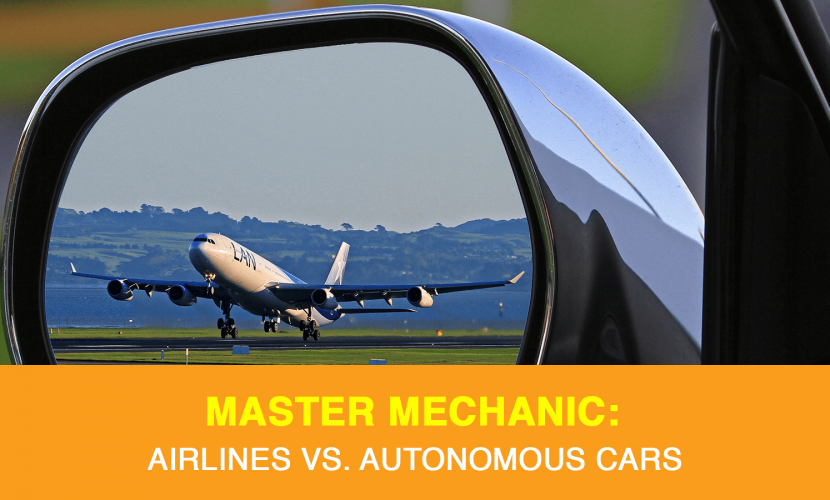MASTER MECHANIC – AIRLINES VS. AUTONOMOUS CARS

MASTER MECHANIC – AIRLINES VS. AUTONOMOUS CARS
Driverless or autonomous cars are becoming increasingly more capable and common on the roads. As they do, they’ll begin to change the way we travel. Not only in our own cities–but for longer distances, too.
For fast, convenient travel, flying has traditionally been the way to go. New research is suggesting that this could change fairly quickly, and airlines need to pay attention.
Canada is over 9,000 km wide, with many roads connecting most of the country. Still, Canadians tend to favour flying over driving cross-country. If someone needed to get from Toronto to Montreal, the flight would take about an hour and fifteen minutes. That’s assuming you don’t run into any airline delays. Factor in travel time to the airport, checking-in, security, and the time you need to wait at the gate–and suddenly a one-hour flight can become four to five hours of travel time. Compared to the 5.5 hours it would take to drive there, you’re really not saving that much time.
What if you could have an autonomous car take you the entire way instead? Much like a plane or train, you could spend the trip eating, working, or sleeping. Your departure time wouldn’t be dictated by an airline, and you could pack as much as you want.
When you arrived at your destination, you wouldn’t have to find a rental car because you’d already have your own. Did we mention that your self-driving car has a recliner or bed onboard? It does.
So, would you still choose a flight?
What do drivers think?
Travellers love how quickly flights can cover large distances, but that’s about it. Most people dread the security checks, lines, potential delays, dealing with baggage, and sharing their space with other passengers.
At the moment, though, most people don’t quite trust driverless vehicles enough to travel cross-country in one. As people learn about the benefits of autonomous driving–and how it can be used in things like ambulances to improve response times–they’ll become more receptive to the idea.
In a recent study, potential travellers were shown trips of different lengths and asked to choose whether they would prefer to drive, take a flight, or ride in a self-driving car. Somewhat surprisingly, the data indicated that people always preferred driverless vehicles over manual driving. Taking a driverless car got even more attractive if people were told that after flying, they would need to coordinate booking a rental vehicle.
As trips got longer, people were more likely to choose flying, but self-driving cars were still a compelling option. Even on a 45-hour drive, only about one in 10 people preferred driving manually–but that number jumped to one in six when the car would be driving itself.
Should Airlines Worry?
Even if one in 10 costumers decided to take a self-driving car instead of a plane, this would surely impact the revenue of most airlines. If this happened at a bigger scale, airlines would likely have to shrink their services or reduce the number of routes they fly daily.
This wouldn’t just be a problem for direct flights. On connecting flights, travellers might prefer to take a driverless car from the connecting airport instead of boarding a new plane altogether.
One thing is certain: these changes could quickly alter the aviation industry–and travel–as we know it. By nature, we’ll always need to fly to certain destinations that aren’t connected by road. That said, as driverless cars become more appealing and practical, commercial airlines will need to rethink how they operate.
As always, if you have any questions or concerns about your car, don’t hesitate to contact your local Master Mechanic to book an appointment. We’re always happy to help.
Hydraulic Power Unit,Diamond Series Hydraulic Power Unit,Electric Forklift Truck Hydraulic Power Unit,220V Lifting Platform Hydraulic Power Unit
Huai'an Sur Hydraulic Technology Co., Ltd , https://www.surhydraulic.com